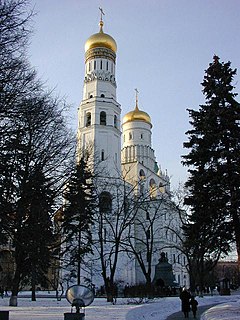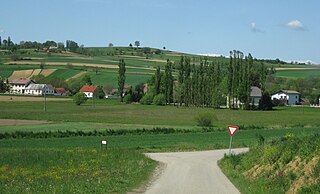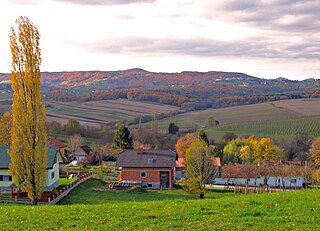Nuskova | |
|---|---|
 | |
| Coordinates: 46°48′34.68″N16°2′2.87″E / 46.8096333°N 16.0341306°E Coordinates: 46°48′34.68″N16°2′2.87″E / 46.8096333°N 16.0341306°E | |
| Country | |
| Traditional region | Prekmurje |
| Statistical region | Mura |
| Municipality | Rogašovci |
| Area | |
| • Total | 2.88 km2 (1.11 sq mi) |
| Elevation | 245.7 m (806.1 ft) |
| Population (2002) | |
| • Total | 311 |
| [1] | |
Nuskova (pronounced [ˈnuːskɔʋa] ; Hungarian : Dióslak, [2] German : Rottenberg [3] ) is a village in the Municipality of Rogašovci in the Prekmurje region of northeastern Slovenia. [4]

Hungarian is a Finno-Ugric language spoken in Hungary and parts of several neighbouring countries. It is the official language of Hungary and one of the 24 official languages of the European Union. Outside Hungary it is also spoken by communities of Hungarians in the countries that today make up Slovakia, western Ukraine (Subcarpathia), central and western Romania (Transylvania), northern Serbia (Vojvodina), northern Croatia and northern Slovenia. It is also spoken by Hungarian diaspora communities worldwide, especially in North America and Israel. Like Finnish and Estonian, Hungarian belongs to the Uralic language family. With 13 million speakers, it is the family's largest member by number of speakers.

German is a West Germanic language that is mainly spoken in Central Europe. It is the most widely spoken and official or co-official language in Germany, Austria, Switzerland, South Tyrol (Italy), the German-speaking Community of Belgium, and Liechtenstein. It is also one of the three official languages of Luxembourg and a co-official language in the Opole Voivodeship in Poland. The languages which are most similar to German are the other members of the West Germanic language branch: Afrikaans, Dutch, English, the Frisian languages, Low German/Low Saxon, Luxembourgish, and Yiddish. There are also strong similarities in vocabulary with Danish, Norwegian and Swedish, although those belong to the North Germanic group. German is the second most widely spoken Germanic language, after English.

A village is a clustered human settlement or community, larger than a hamlet but smaller than a town, with a population ranging from a few hundred to a few thousand. Though villages are often located in rural areas, the term urban village is also applied to certain urban neighborhoods. Villages are normally permanent, with fixed dwellings; however, transient villages can occur. Further, the dwellings of a village are fairly close to one another, not scattered broadly over the landscape, as a dispersed settlement.
There is a small chapel in the settlement dedicated to the Holy Trinity. It was built in 1925 and has a small belfry. [5]

The Christian doctrine of the Trinity holds that God is one God, but three coeternal consubstantial persons or hypostases—the Father, the Son, and the Holy Spirit—as "one God in three Divine Persons". The three Persons are distinct, yet are one "substance, essence or nature" (homoousios). In this context, a "nature" is what one is, whereas a "person" is who one is. Sometimes differing views are referred to as nontrinitarian. Trinitarianism contrasts with positions such as Binitarianism and Monarchianism, of which Modalistic Monarchianism and Unitarianism are subsets.

A bell tower is a tower that contains one or more bells, or that is designed to hold bells even if it has none. Such a tower commonly serves as part of a church, and will contain church bells, but there are also many secular bell towers, often part of a municipal building, an educational establishment, or a tower built specifically to house a carillon. Church bell towers often incorporate clocks, and secular towers usually do, as a public service.













